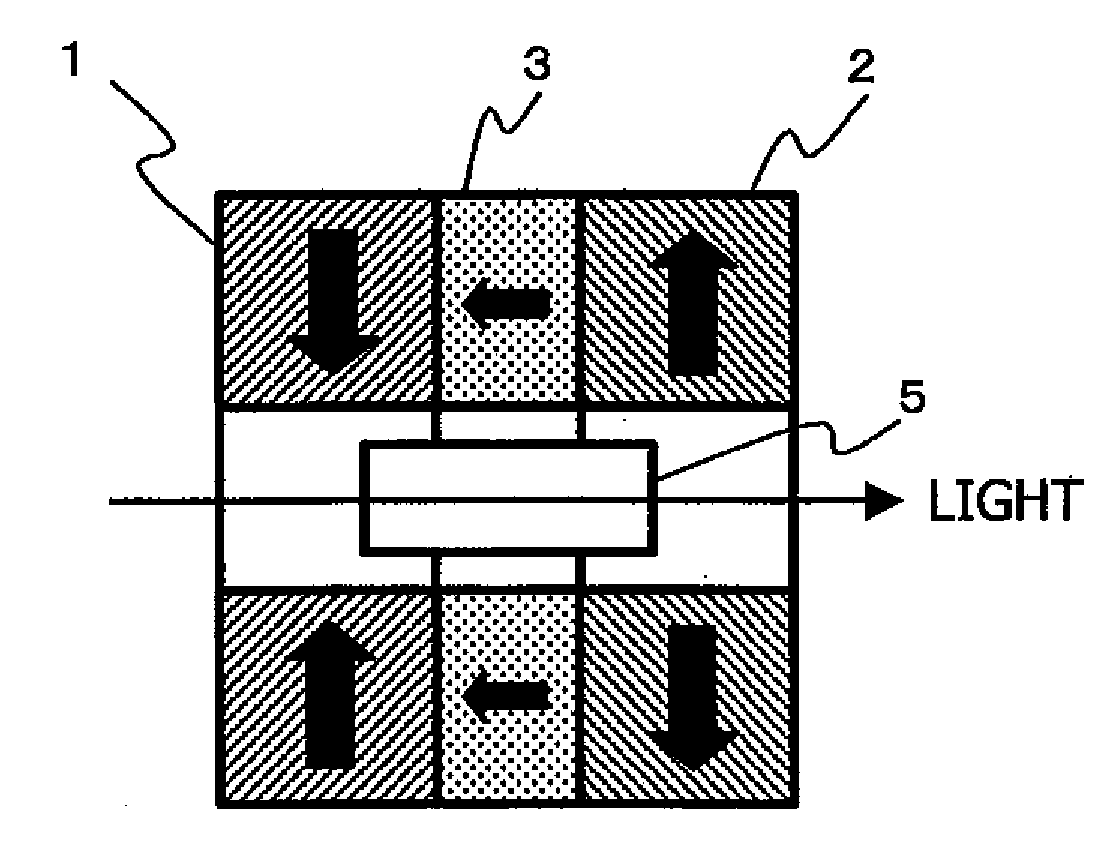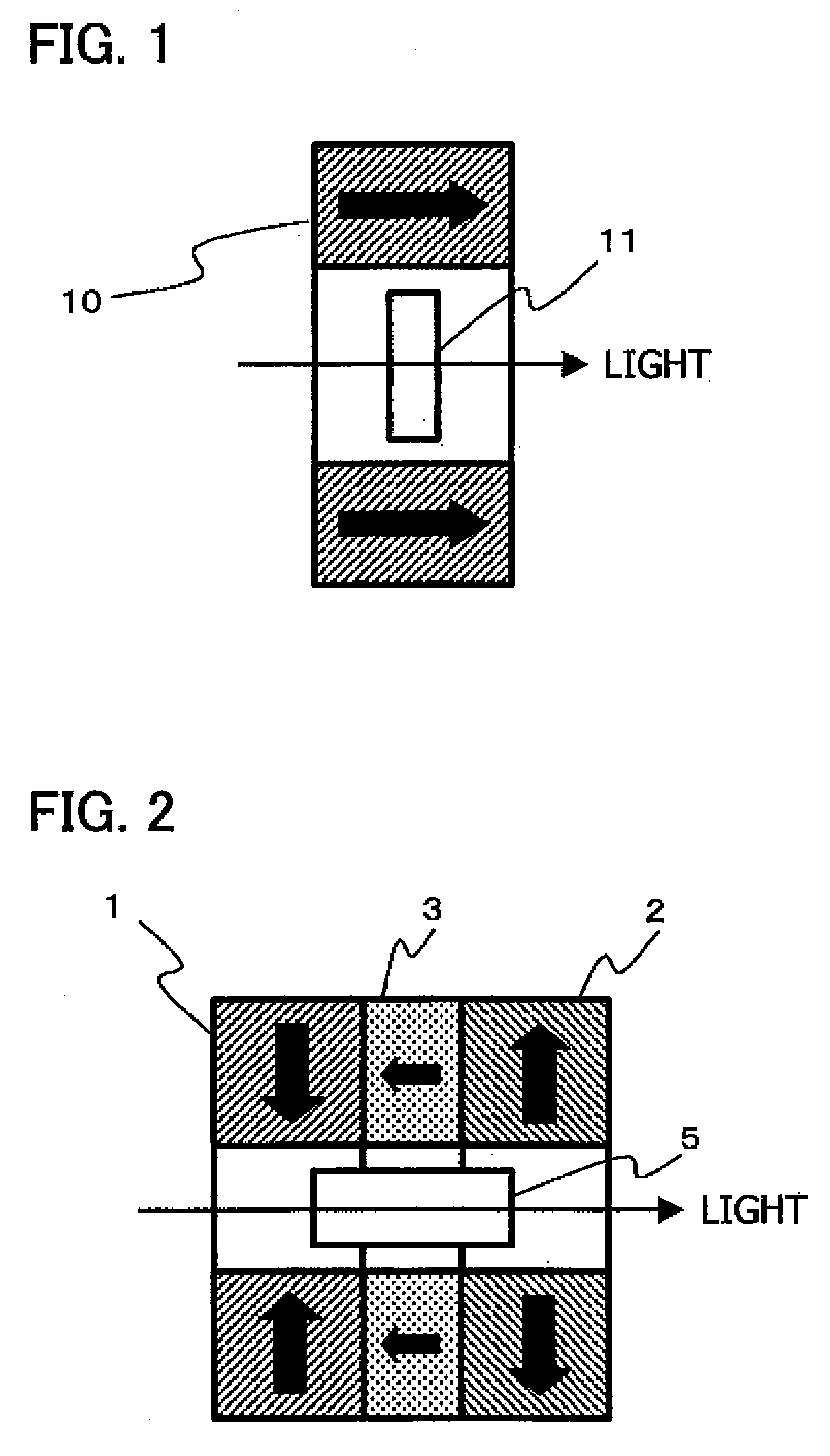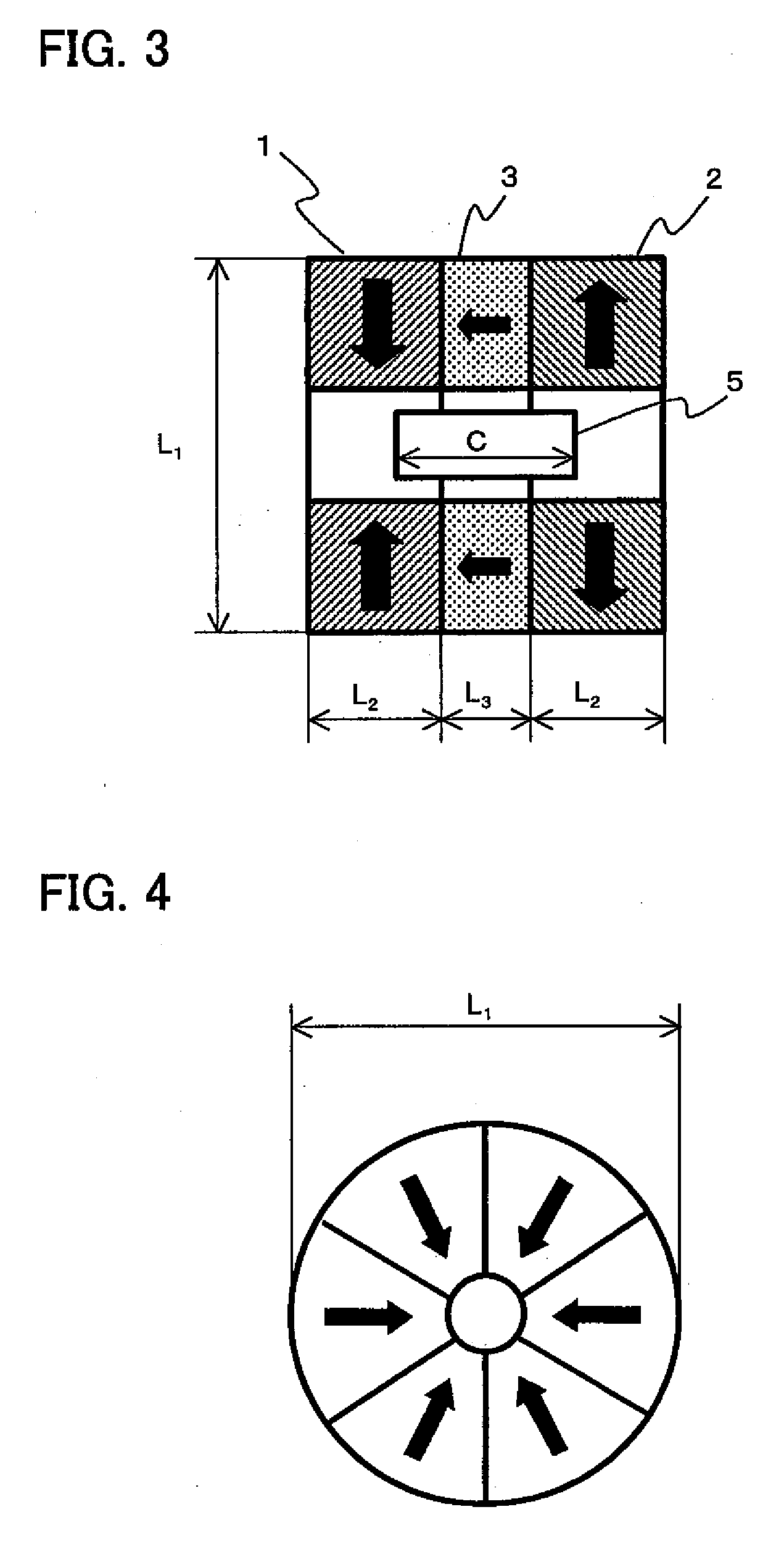Faraday rotator
a rotator and faraday technology, applied in non-linear optics, instruments, optics, etc., can solve the problems of increasing cost, requiring a strong magnetic field, rotating the plane of polarization, etc., and achieves stable faraday rotation angle, low strength, and compact rotator.
- Summary
- Abstract
- Description
- Claims
- Application Information
AI Technical Summary
Benefits of technology
Problems solved by technology
Method used
Image
Examples
example 1
[0045]FIG. 2 is a sectional view showing a Faraday rotator according to Example 1. In FIG. 2, reference numerals 1, 2 and 3 denote a first magnet, a second magnet and a third magnet, respectively, and their directions of magnetization are shown by black arrows. The magnets are each also provided with a hollow space (through-hole) at the center thereof.
[0046]The first magnet 1 stands magnetized in the direction that is perpendicular to the optical axis along which the light is to pass and the direction taken toward the optical axis from the outside. On the other hand, the second magnet 2 stands magnetized in the direction of magnetization that is perpendicular to the optical axis but the direction taken toward the outside from the optical axis as being opposite to that in the first magnet 1. The third magnet 3 is disposed between the first magnet 1 and the second magnet 2 and stands magnetized in the direction of magnetization that is perpendicular to the optical axis and the directi...
example 2
[0060]A Faraday rotator was produced which was so structured that two Faraday rotators which are each the same as the Faraday rotator according to Example 1 were connected in series as shown in FIG. 8 and a pair of fourth magnets 4 constituted of an inside magnet and an outside magnet which stood magnetized in the directions that are each other inversely parallel to the optical-axis direction was inserted between the two Faraday rotators. Here, the inside magnet constituting part of the pair of fourth magnet 4 stood magnetized in the direction of magnetization that is parallel to the optical axis and the direction taken toward the second Faraday rotator on the right side in FIG. 8 from the first Faraday rotator on the left side in FIG. 8. The outside magnet also stood magnetized in the direction of magnetization that is parallel to the optical axis but the direction taken toward the first Faraday rotator on the left side in FIG. 8 from the second Faraday rotator on the right side in...
PUM
 Login to View More
Login to View More Abstract
Description
Claims
Application Information
 Login to View More
Login to View More - R&D
- Intellectual Property
- Life Sciences
- Materials
- Tech Scout
- Unparalleled Data Quality
- Higher Quality Content
- 60% Fewer Hallucinations
Browse by: Latest US Patents, China's latest patents, Technical Efficacy Thesaurus, Application Domain, Technology Topic, Popular Technical Reports.
© 2025 PatSnap. All rights reserved.Legal|Privacy policy|Modern Slavery Act Transparency Statement|Sitemap|About US| Contact US: help@patsnap.com



